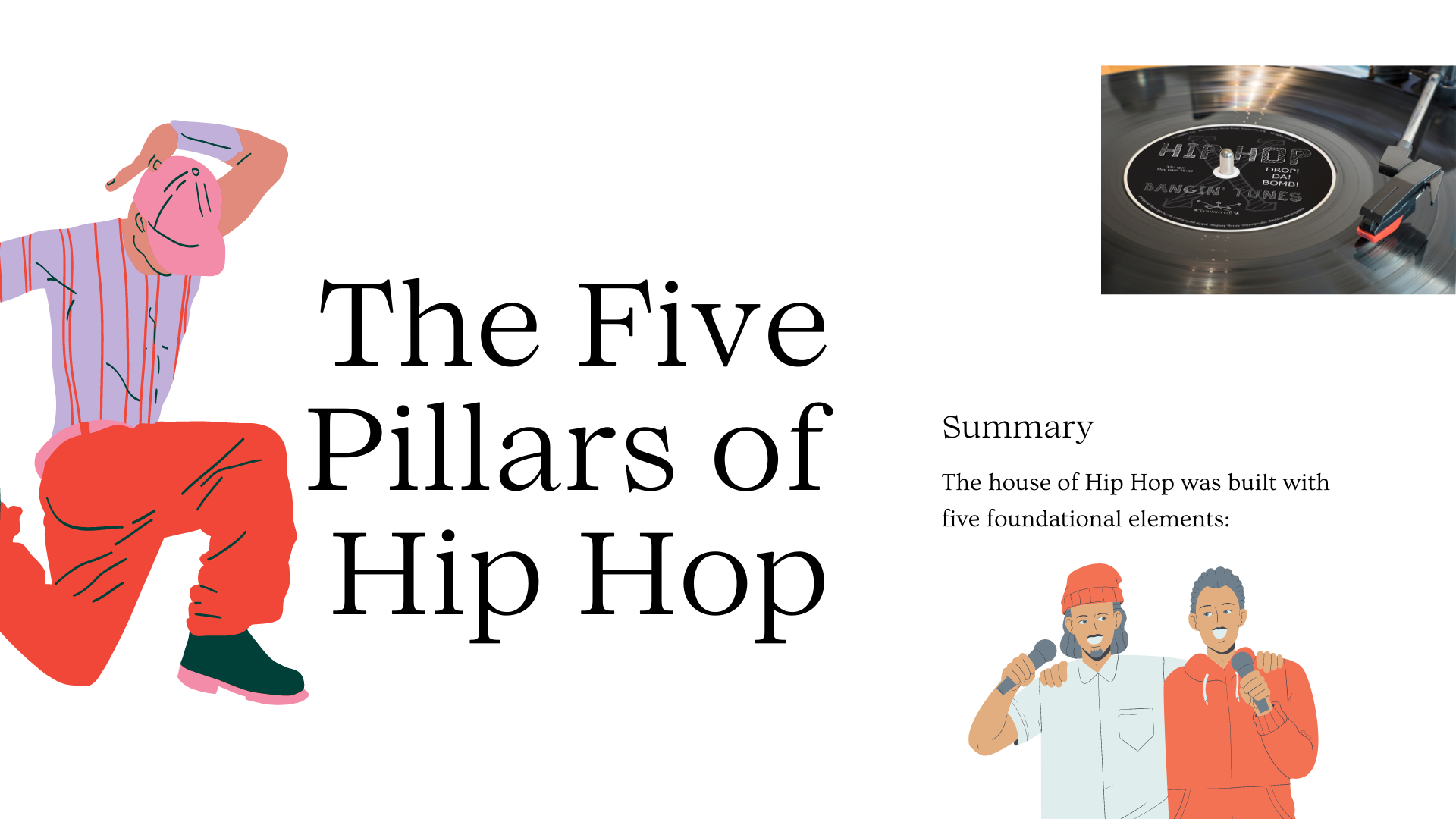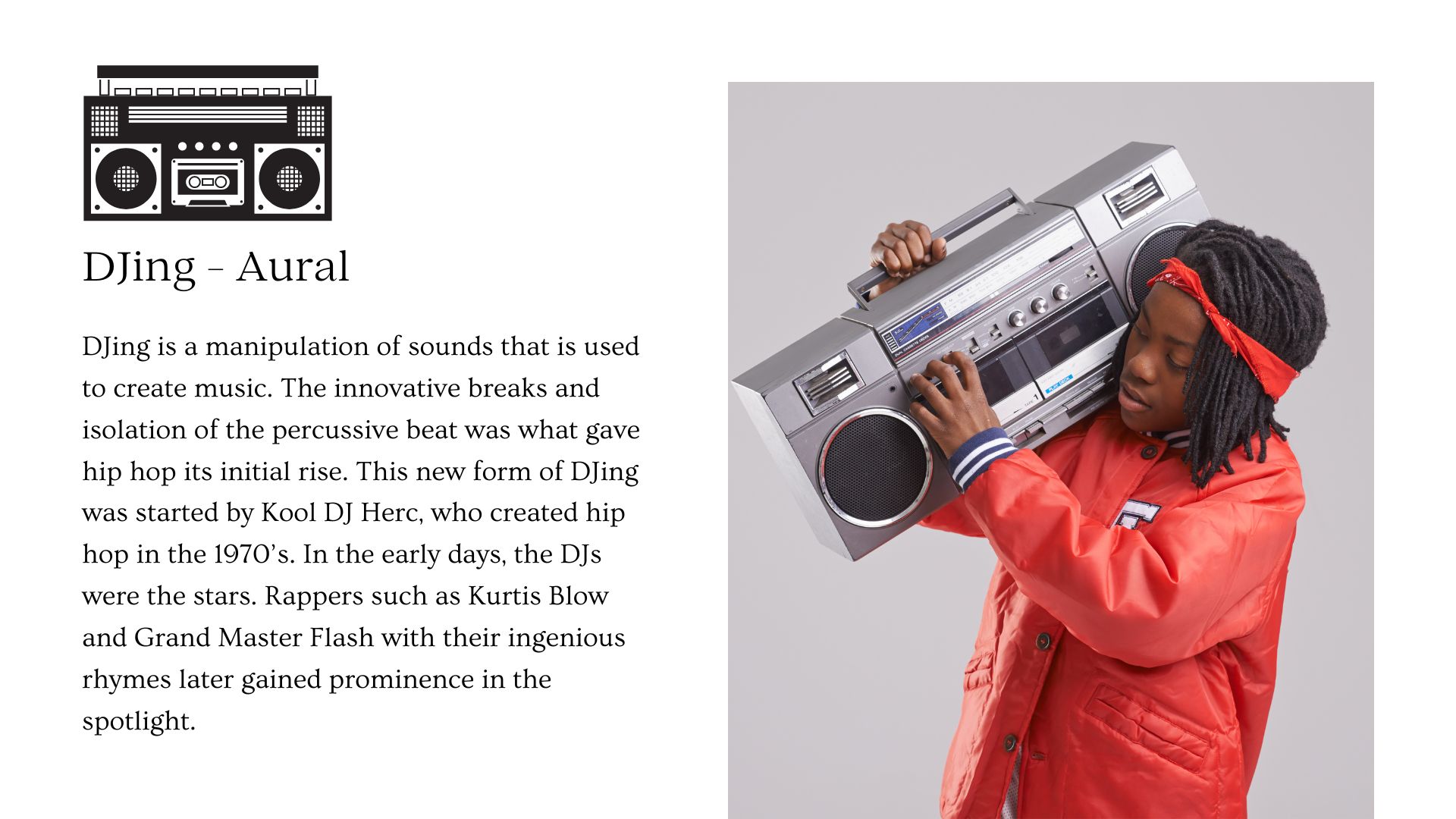THE FIVE PILLARS OF HIP HOP
The house of Hip Hop was built with five foundational elements:
1. MCing (Oral)
2. DJing (Aural)
3. Breakdance (Physical)
4. Graffiti (Visual)
5. Knowledge (Mental)
A house built on rock must stand. The pillars, the rocks that ushered Hip Hop into the 21st century as a cultural phenomenon were formulated by DJ Afrika Bambaataa of the hip hop collective, Zulu Nation. The knowledge of the five pillars might not be widespread, but its structural significance should not be understated.
FROM: http://muce305.org/5-elements-of-hip-hop/
The legacy of Hip-Hop
Let’s take it back to the very beginning: The August 11, 1973 rec room party at 1520 Sedgwick Avenue in the Bronx is undeniably one of (if not THE) most famous parties in Hip-Hop’s history. Thrown by a father of Hip-Hop, DJ Kool Herc, and his sister Cindy, it was here that Herc experimented with “the breaks” in records, elongating portions of them after noticing that dancers would choose certain points in a record to flock to the floor.
Hip-Hop, however, was not the discovery of one single person. Dance floors were shaking before that famous night in August. Kurtis Blow, another father of Hip-Hop, DJ’d his first party at the age of thirteen. There were no turntables, only instinct and a unique style that would secure his place in history. The same breaks that DJ Kool Herc would experiment with on August 11th, Kurtis Blow would also discover by listening to James Brown, who he called: “the number one cat during that time [Motown era] with the funkiest beats that we would dance to…” Kurtis Blow would go on to record the iconic song ‘The Breaks,’ and taught people who had never been to those famous Bronx parties how to navigate a new rhythm. It was clear that a new groove was emerging from the Bronx and would echo out from each borough of New York City...and soon the world.
Hip Hop’s Five Pillars: MCing, DJing, Breakdancing, Graffiti, and Knowledge, were born out of the collective spirit of excitement and innovation that describes this moment in Hip-Hop’s history. Commercial recognition wasn’t far ahead; Kurtis Blow became the first rapper signed to a major record label deal in 1979 with his song Christmas Rappin’. The Sugar Hill Gang’s Rapper’s Delight was one of the first Hip-Hop singles to land on the Top 40 Charts in 1979. Hip-Hop has continued to break records and shatter expectations—from Salt-N-Pepa being the first female rap group to win a Grammy, to programs like Yo! MTV Raps and Rap City bringing an emerging music and culture to the homes of millions of Americans—it has been more than 40 years filled with innovation, collaboration and of course, music.
Useful Hip Hop References
Rapping deconstructed: The Best Rhymers of All Time
He authored two books:
Urban Science Education for the Hip-Hop Generation (2010)
For White Folks Who Teach in the Hood... and the Rest of Y'all Too: Reality Pedagogy and Urban Education (Race, Education, and Democracy) (2016)









